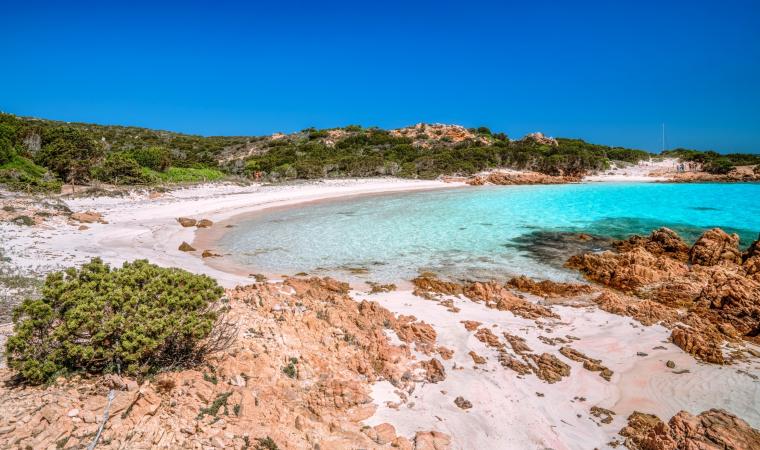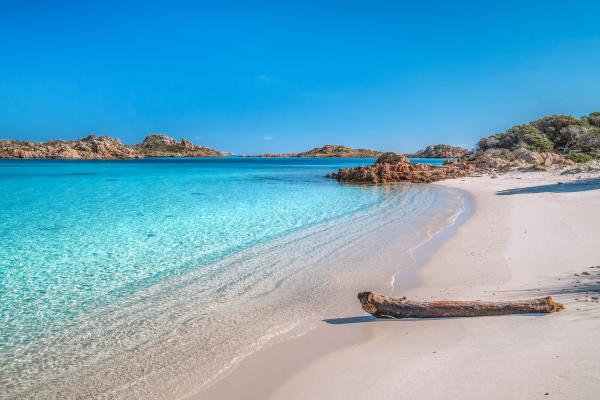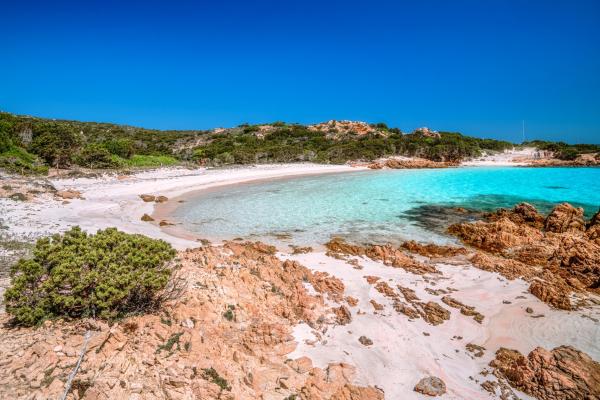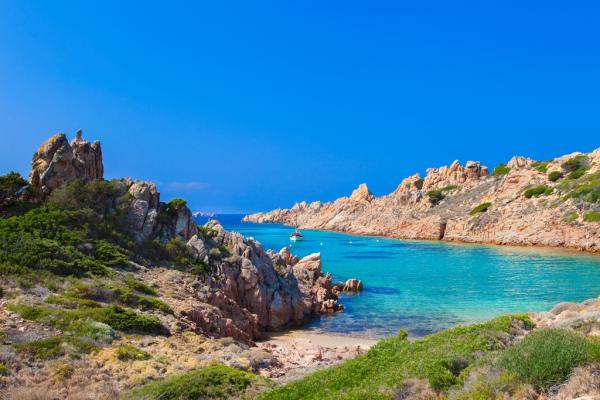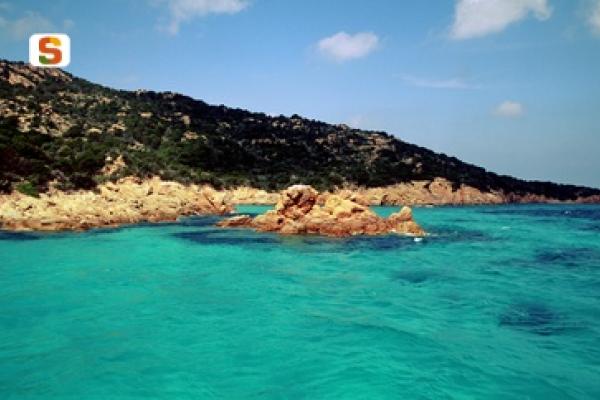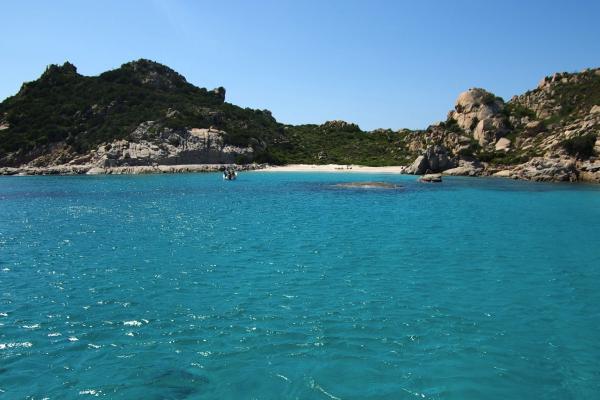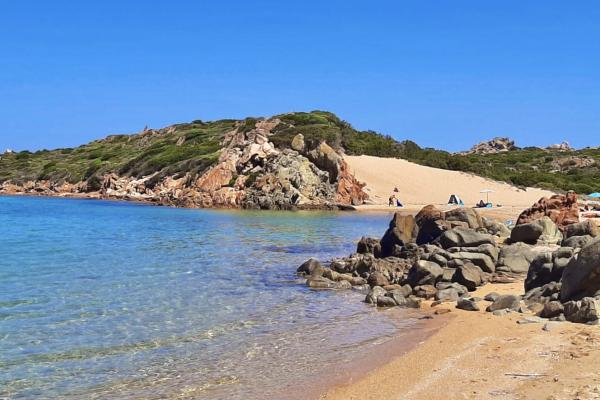You can admire it as an authentic masterpiece of nature from the nearby beaches spiaggia del Cavaliere and Cala di Roto, accompanied by the guides of the Maddalena Archipelago National Park. Its view offers unforgettable emotions. The Pink beach on Budelli Island, one of the world’s most beautiful beaches, owes its name to the colour of its sand, rich with tiny fragments of coral, granite and shells. Its spectacular colour is derived from a pink microorganism that inhabits the posidonia meadows and lives inside the shells. When it does, the shells are washed ashore and ground by water and wind.

Beach
Near the Bocche di Bonifacio, to the northernmost tip of Sardinia, there exists one of the symbols of the Maddalena Archipelago, a wonder of nature, whose myth has been enhanced and made immortal by a famous film
Near the Bocche di Bonifacio, to the northernmost tip of Sardinia, there exists one of the symbols of the Maddalena Archipelago, a wonder of nature, whose myth has been enhanced and made immortal by a famous film
Approfondimenti
See this place because...
Discover the secret of the red sand of a mythical beach, a priceless wonder in a fabulous naturalistic background
Pictures and videos
Nearby
Services
Ti piace questo luogo? La Maddalena potrebbe essere la tua meta ideale.
You may also like
More attractions in the vicinity

